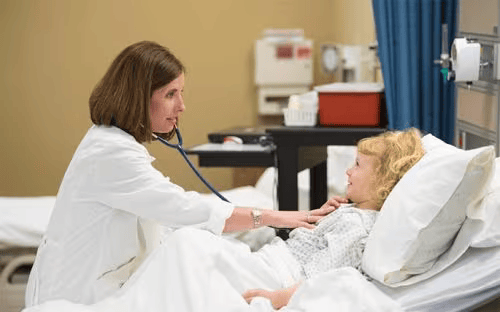Underserved Populations in Healthcare

According to the Centers for Disease Control and Prevention, more than 90 percent of Americans under the age of 65 are enrolled in private or public health insurance plans. This figure seems to substantiate the efficacy of the national health care delivery system in the United States. The reality is that many individuals are left underserved by American clinics, hospitals and health care organizations. Roughly 28 million citizens and permanent residents are uninsured due to increasingly expensive premiums. Even individuals with active health plans struggle to find care as a result of physician shortages.
Many health care organizations are attempting to address these issues by deploying medical personnel to underserved communities. Deploying these medical personnel means that many doctors and nurses may find themselves on the front lines of an American health care crisis. Practicing in this environment comes with unique challenges. Nurses hoping to offer on-the-ground assistance must prepare themselves for the experience by gaining an understanding of medically underserved populations and by learning specialized care techniques to serve those individuals included in this group.
Identifying the underserved
The federal government has long tracked underserved populations. The Department of Health and Human Services designates regions, facilities or populations that lack access to medical care as health professional shortage areas (HPSAs). According to data compiled by the Kaiser Family Foundation, more than 6,600 communities carried this designation by the conclusion of 2016. Symptoms of HPSAs are low availability of dental, primary and mental health services. California has the most active HPSAs, while Michigan maintains the highest concentration.
Understanding the causes
Numerous factors make it difficult for some populations to attain adequate medical care. Analysts for the Kaiser Family Foundation noted that poverty is the most common roadblock, especially for African American and Hispanic residents. An estimated 24 percent of black individuals live below the poverty line, while 21 percent of Hispanic people are in similarly dire financial straits. Comparatively, the poverty rate for white residents is 9 percent.
Organizations monitoring medically underserved populations also consider regional and state-based poverty measurements. The Southeast is home to a significant number of communities whose members live in rural areas below the poverty line, according to the Census Bureau. Consequently, many states in this region manage HSPA populations numbering in the millions.
Cultural barriers also prevent underserved populations from accessing medical care. Latino individuals often avoid visiting the doctor altogether because they cannot communicate effectively in English, according to the American Academy of Family Physicians (AAFP). Immigration status is also a concern for this specific group, as some Hispanic or Latino patients are undocumented.
Trends within the health care industry drive up the number of medically underserved populations. Interest in primary care practice among medical students has waned and, in turn, reduced care access in some areas, according to the National Conference of State Legislatures. The U.S. has a shortage of nearly 7,000 primary care physicians, according to data from the Health Services and Resources Administration (HSRA). This number is expected to grow to between 15,000 and 35,000 by 2025, as more specialists rise through the ranks, retirements increase and demand increases, analysts for the Association of American Medical College found.
These variables continue to catalyze the expansion of underserved populations and, therefore, give way to less than ideal care outcomes. According to the AAFP, infant mortality rates are high in these communities, and the number of cancer, diabetes and heart disease diagnoses continue to grow.
Searching for solutions
There is really only one option for addressing medically underserved populations: entering neglected communities and providing customized care. Many health care organizations are answering the call. The National Association of Free and Charitable Clinics periodically opens outposts in areas that host large underserved populations. The organization not only sets up temporary facilities and provides mobile clinical services but also works with city governments to establish permanent clinics, such as the Free Clinic of Culpeper in Culpeper, Virginia.
Nurses are often at the center of these programs, using their interpersonal and medical skills to make connections and solve health problems. In some cases, these health care professionals do far more than staff wards. Registered nurse Patricia Gerrity founded Eleventh Street Family Health Services in Philadelphia in an effort to care for underserved populations in the city, according to the HRSA. There, she offers services in a county that includes 46 federally designated HPSAs.
Working with the underserved
Nurses like Gerrity, although reliant on their medical knowledge, possess special skill sets that allow them to function effectively in facilities designed to treat underserved populations. Advanced communication skills are essential in many situations, according to the American Medical Association Journal of Ethics. Nurses caring for underserved populations often encounter patients who cannot converse in English. This situation necessitates fluency in another commonly spoken language such as Spanish. Additionally, nurses working with patients from underserved populations must learn how to deftly read nonverbal cues, as many patients balk at expressing their needs openly.
Cultural knowledge is also essential in these settings, the AAFP found. For instance, some medically underserved communities adhere to customs that promote the use of folk and herbal remedies. Understanding these treatments can lead to better care outcomes. Additionally, basic cultural knowledge lays the groundwork for stronger patient connections.
With the demand for health care steadily rising, underserved populations across the country need more help than ever before. Individuals entering the nursing field should take this need into account as they chart out their careers.
Individuals who are interested in making an impact in medically underserved communities should consider the online Master of Science in Nursing - Family Nurse Practitioner program (MSN-FNP) at Bradley University. Through those studies, registered nurses can gain the advanced skills and knowledge they need to care for people in dire need of assistance.
Recommended Readings
Sources
https://www.cdc.gov/nchs/fastats/health-insurance.htm
http://journalofethics.ama-assn.org/2011/08/medu2-1108.html
https://www.ncbi.nlm.nih.gov/pmc/articles/PMC3625069/
https://bhw.hrsa.gov/shortage-designation/muap
http://nursesusa.org/articles_how_nurses_help_underserved_communities.asp
https://www.ncbi.nlm.nih.gov/pmc/articles/PMC4408316/
https://datawarehouse.hrsa.gov/topics/shortageAreas.aspx
https://www.aamc.org/newsroom/newsreleases/458074/2016_workforce_projections_04052016.html